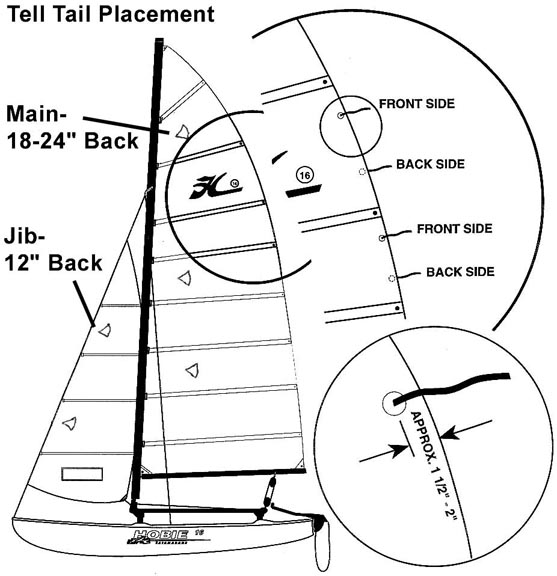Pat R wrote:
My main block has been probably a foot from the block on the boom. I'm guessing now that's due to the longer shrouds and not enough downhaul. Does that sound right?
Cranking down on the jib halyard seemed to have helped some. I started doing that on someone's recommendation after the first time we sailed the H16 and it did help to a degree. I'm a little confused about that because I would think that would decrease mast rake. Is cranking on the jib halyard mostly important for light winds? Or do you crank down on the jib halyard in heavier wind too?
Thanks again!
Pat
83 Hobie Cat 16
Newbie
Setting the rake is a trial and error process. Ignore the shrouds to set rake. The traveler is centered and the mainsheet pulled on hard. The mainsheet blocks should be "too blocked". If you can trim the mainsheet in before a tack you are not even close to upwind trim. The forestay will be completely slack. All the tension will be in the jib halyard. If you cannot get the boom very close to the rear cross bar, ease the jib halyard until you can. If the forestay goes tight before you get the rake correct move the forestay to the the top hole in your 10 hole forestay plate. If it still goes tight, add another plate.
Once you have the rake set so you can sheet the main in hard, mark the jib halyard. With no tension on the main sheet check the shrouds. Pin them so they are just tight with the jib halyard at the right setting.
Use your main halyard to measure the rake and note the setting.
Go sailing. The main boom should be very close to the aft cross beam. The jib clew should be very close to the front crossbeam. After every tack repeat to yourself "speed first, then point". The boat will not accelerate to point mode in point trim. You must have the boat moving well before you sheet in the last few inches and point. The 16 will not point with a mono, but it will beat 40 footers to the weather mark tacking through 100°.
Spend your off season looking at photos and video of H16 worlds and nationals. Look closely at trim. You will be amazed.






